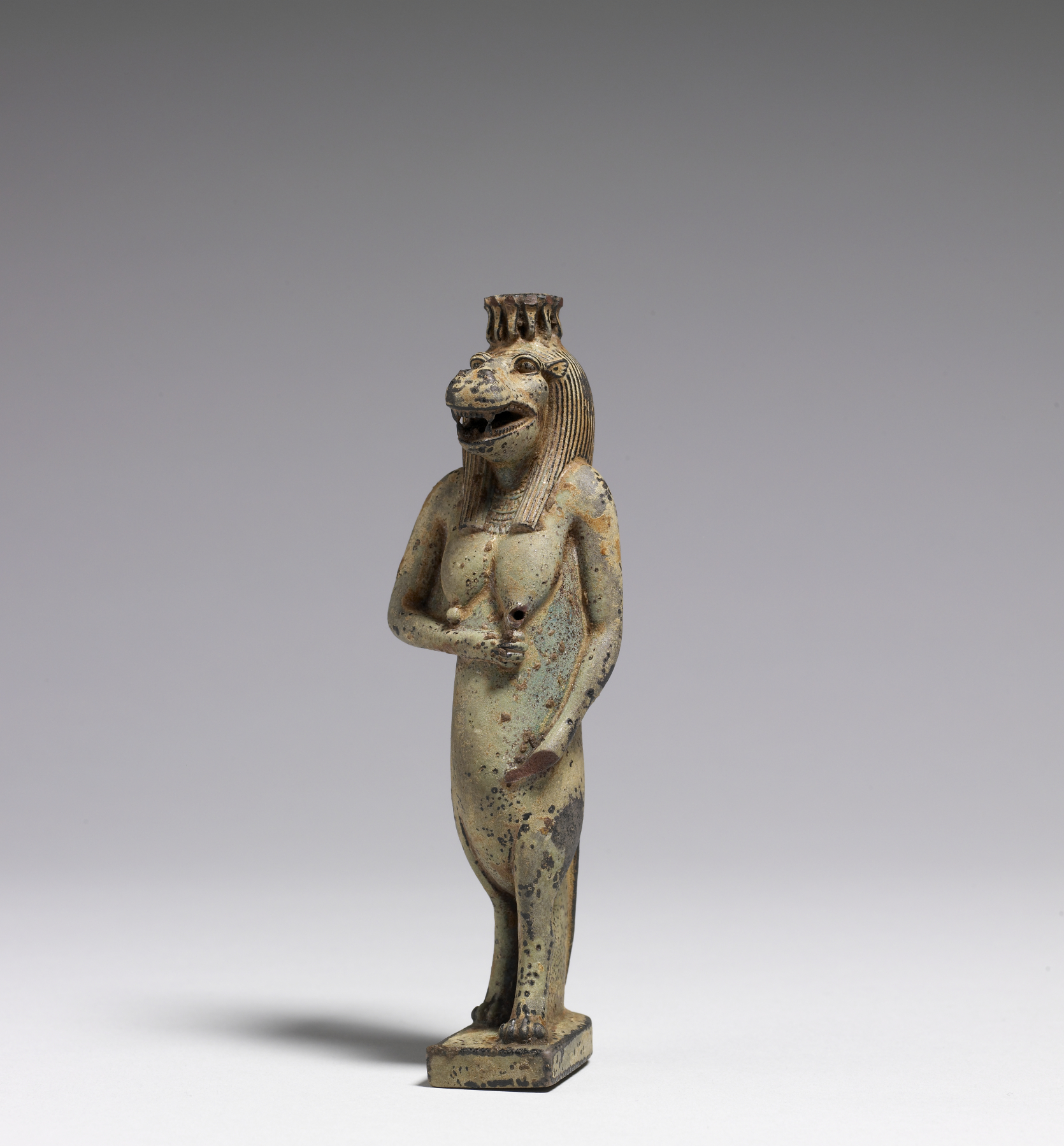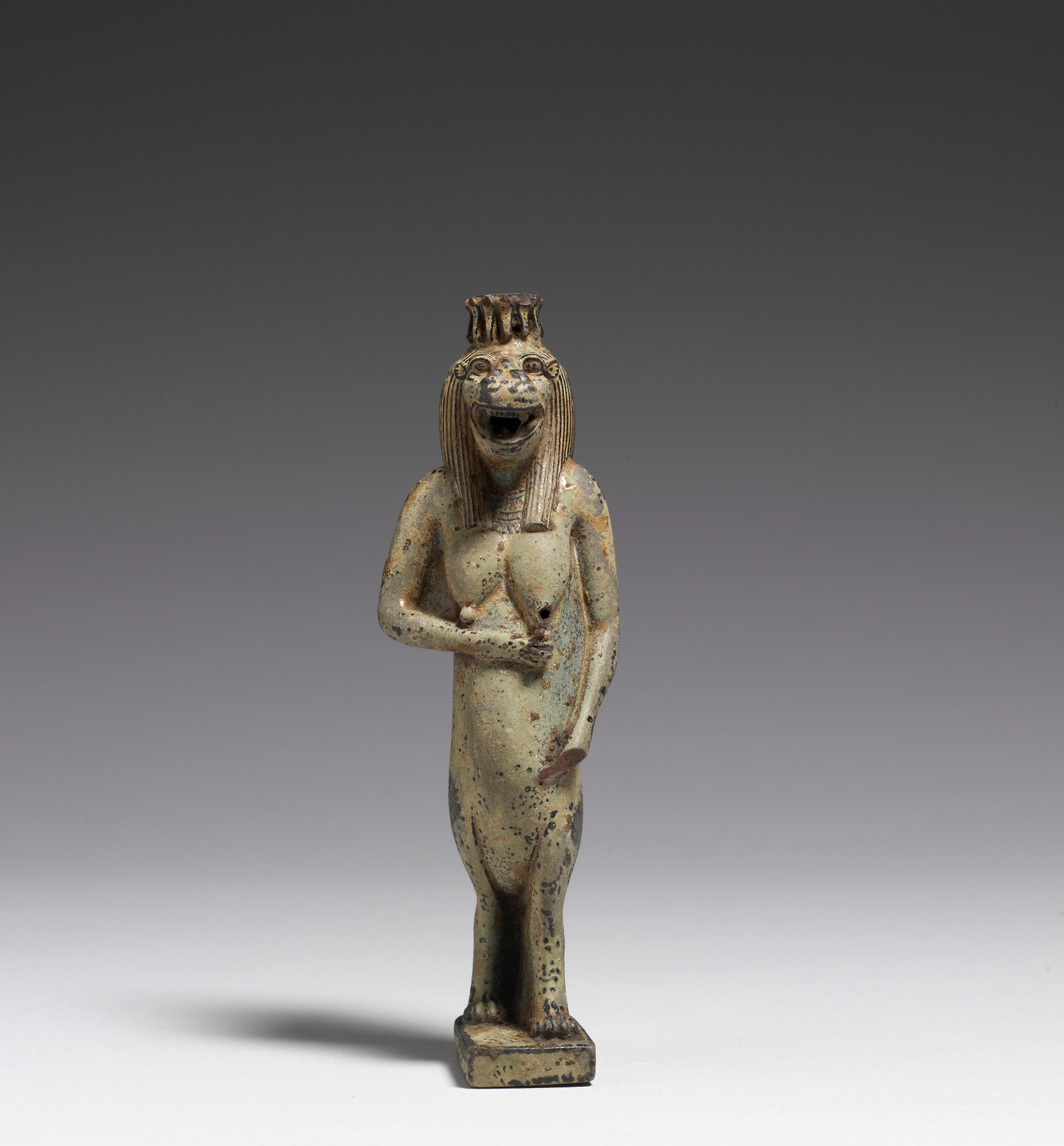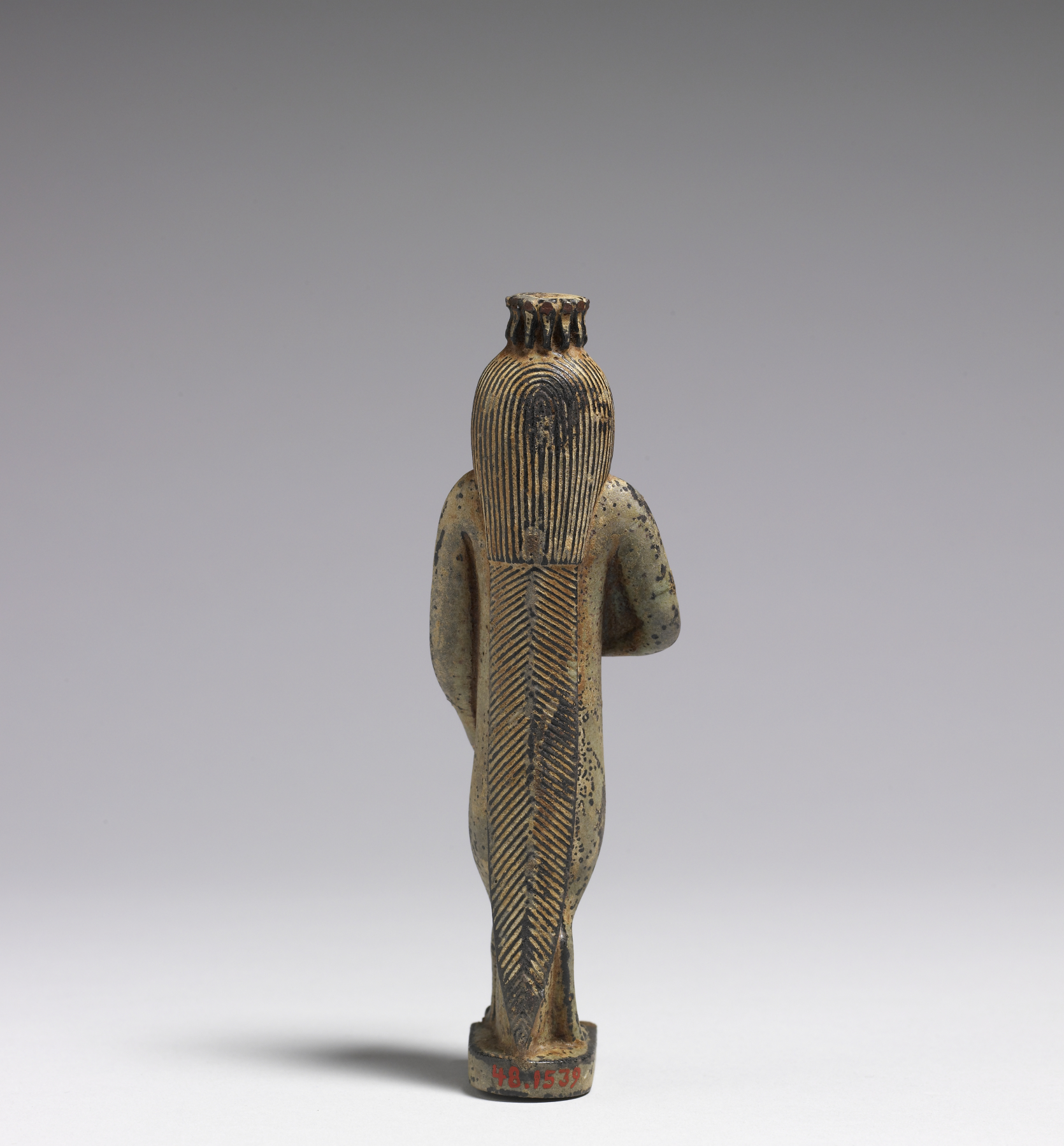Vessel in the Form of Taweret
(Ancient Egypt and Nubia )
Taweret, meaning "the Great" (Greek version: Thoeris), is the name of a goddess who is depicted as a standing upright pregnant hippopotamus with a crocodile back and tail, lion paws, and in most cases human arms. Taweret is a protective deity, particularly connected to pregnancy and birth. Amulets in the shape of Taweret became popular in the Third Intermediate period.
This figure is large for an amulet and displays the goddess wearing a long wig and modius (calathos) with uraei (cobra serpents) on her head. While the standard posture of Taweret is with her arms hanging down beside her body, this figure shows her right arm resting on her belly. And the glaze is almost gone. It is very difficult to read what the original color of the glaze was.
Provenance
Provenance (from the French provenir, 'to come from/forth') is the chronology of the ownership, custody, or location of a historical object. Learn more about provenance at the Walters.
Maurice Nahman, Cairo [date and mode of acquisition unknown]; Henry Walters, Baltimore, 1930, by purchase; Walters Art Museum, 1931, by bequest.
Exhibitions
| 2013-2014 | Egypt’s Mysterious Book of the Faiyum. The Walters Art Museum, Baltimore. |
Conservation
| Date | Description | Narrative |
|---|---|---|
| Examination | Examined | |
| Treatment | Examined, cleaned | |
| Examination | Examined in preparation for exhibition. | |
| Treatment | Examined and cleaned in preparation for exhibition. | |
| 7/21/1998 | Examination | survey |
Geographies
Egypt (Place of Origin)
Measurements
H: 5 5/8 x W: 1 11/16 x D: 1 5/8 in. (14.27 x 4.26 x 4.13 cm)
Credit Line
Acquired by Henry Walters, 1930
Location in Museum
Accession Number
In libraries, galleries, museums, and archives, an accession number is a unique identifier assigned to each object in the collection.
In libraries, galleries, museums, and archives, an accession number is a unique identifier assigned to each object in the collection.
48.1539










